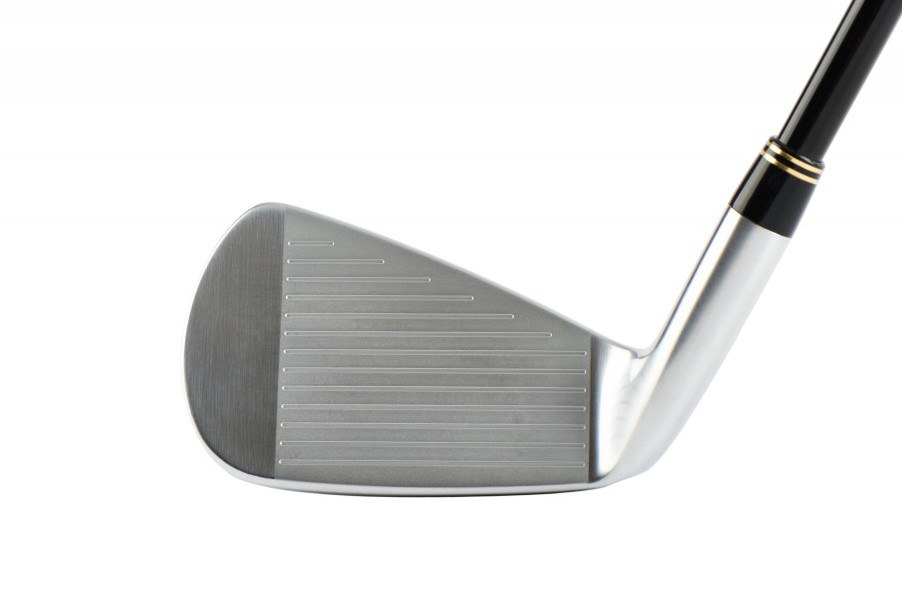Golf fitting is a complex area but there is generally a correlation between build and club specs. A shorter golfer will more often than not use shorter clubs and a taller golfer, longer. This seems like a self-evident truth. However, when we get to driver, the relationship isn’t quite the same. So how does driver length vs height work?
- Taller golfers generally need longer clubs
- lie angle is important but far less so with driver
- taller golfers might be better with standard or even shorter drivers
- Longer driver shafts are more difficult to hit, costing distance and accuracy
Club Length: One of the Basics of Club Fitting
There are different views on club fitting and custom fitting in general, depending on who you ask. Some people will talk about the shaft being the “engine of the club” (really?) Others are going to spend far more time on the clubhead itself. In terms of getting a club that truly ‘fits’ the golfer, shaft length, lie angle and grip size are all going to be important parts of the process. An example of this would be Ping’s excellent static fit colour code system.
I say static fit, but Ping will rightly point out that this static fitting is only a starting point for finding the right club specs for a given golfer. For the purposes of this article, we will consider this starting point on its own rather than worrying too much about dynamic fitting because it illustrates our point quite well.
Taking myself as an example (apologies!), when I go through the Ping colour code chart to find my ideal specs, it will generally give me either an inch or an inch and a half over their standard length and probably white, silver or maroon colour code, that is to say somewhere around 3 to 5 degrees upright.
Given my height (6ft 6inches or just shy of two metres tall) this makes sense as a starting point. I am taller than average by a fair bit, my wrist to floor measurement is well over average and so traditional thinking would certainly have me playing over length.
The lie angle question is another kettle of fish which we will come back to later.
If I take my current iron set, the MP 64s from Mizuno, they are about an inch over length and a couple of degrees upright. All well and good. I don’t want to be crouched over a 35.5 inch wedge too much because my back wouldn’t like it!
Playing a 47 Inch Driver
Following on from this logic throughout the bag, I should have a driver that is somewhere between 46 and 47 inches long, give or take. Standard driver length is even more variable from one manufacturer to the next, but we can probably say that most drivers are sold at somewhere around 45 to 45.5 inches long, so an inch to an inch and a half over is 46-47 inches.
I have played, at least on the range, drivers at this length, mainly during fitting sessions. The results tend to be somewhere between poor and awful. My driver length vs height relationship is theoretically pretty good, so why is this?
There are two reasons. The first is to do with modern clubs in general and the second related to out ability to strike the ball. Distance, especially in drivers, sells. Potentially, a 45.5 inch driver will hit the ball further than a 44-inch driver provided you can hit the sweet spot. This last bit is key because most of us are going to struggle a lot to middle a driver as it gets longer. I will hit a 44-inch driver quite well, a 45 less so and 46 and beyond is basically a joke most of the time. A machine that tests drivers will middle it every time and the manufacturer can tell you that the latest driver goes five yards longer.
The reality for most golfers is generally the opposite with poor strike more than off-setting these potential distance gains.
How to Really Fit for Driver
So if we are saying that a shorter driver is better, how does that leave us from a fitting perspective? Well, for shorter golfers, no real problem. Although it doesn’t make sense to go too short, playing something at 44 inches would be ideal for someone of average height or less, giving better strike and enough club length to send it out there.
When you consider a taller golfer, we shouldn’t necessarily be going longer. As much as I don’t want to be hunched over a 35.5 inch wedge, I have no problems hunching over a driver of any length. In fact, I have played slightly under length drivers quite often and with solid results.
Which brings us back to lie angle. Many people consider the relationship between lie and angle and length to be the key one in fitting. I think this at least somewhat true for irons. A golfer I know who is similar height to me once said that in a pinch he was fine with standard length and very upright irons but struggled with over length and standard lie. This isn’t true for all golfers and some might find that they prefer longer and not so upright or even flat.
With driver, this lie angle tends to matter very little. There are two reasons for this. The first and least important, is that the driver never actually hits the ground. The ball is teed up high and we should, at least in theory, be swinging up on the ball. A lie angle that is too flat or upright has literally no consequence on turf interaction (this is essentially true for irons too, but I digress.)
The second reason is to do with something called “D Plane”. This is essentially the direction in which the face points at impact.
The easiest way to understand this is by taking a lofted iron and standing at address. As you lower the hands (making the face sit more upright with heel down and toe up) you see that the face starts to point off to the left. If you raise the hands, the opposite occurs. This is what happens when lie angle is radically off for a given golfer. Too upright doesn’t make the heel hit first and the club rotate closed as many people think, simply it causes the face to point off to the left and consequently the ball goes left.
Driver Length vs Height: A Non-Issue?
Now think about the driver with perhaps 10 degrees of loft. Lowering or raising the hands will affect D Plane but there is so little loft, the difference is minimal. It is certainly far less important than the difference made by our less than perfect swings as we leave the club open or closed for example.
This is why lie angle becomes a non-factor in driver fitting. Given that the club will already be long enough for all but the tallest of tall golfers and playable for all but the shortest, length is all about making a given golfer hit the centre of the club as often as possible. In almost all cases this will be easier with a shorter driver. Whether you play over length or under length irons, playing a driver somewhere between 44 and 45 inches will give the best chance of combining distance and accuracy off the tee, regardless of height.




